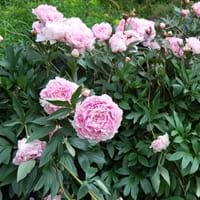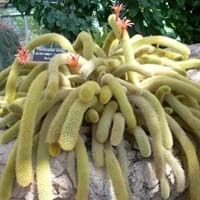Life Span
Perennial
Perennial
Type
Flowering Plants, Shrubs
Cactus
Origin
Asia, North America, Southern Europe
Not Available
Types
Aristocrat, Buckeye Belle, Henry Bockstoce , Abalone Pearl, Coral Supreme, Cytherea, Charlie's White
Not Available
Number of Varieties
Not Available
Habitat
Hillside, Woods
Not Available
USDA Hardiness Zone
3-9
12-15
Sunset Zone
A3, 1a, 1b, 2a, 2b, 3a, 3b, 4, 5, 6, 7, 8, 9, 10, 11, 12, 13, 14, 15, 16, 17, 18, 19, 20, 22
12, 13, 21, 22, 23, 24
Habit
Clump-Forming
Upright/Erect
Flower Color
Pink, Red, White
Red, Orange, Salmon
Flower Color Modifier
Not Available
Not Available
Fruit Color
Not Available
Not Available
Leaf Color in Spring
Dark Green
Not Available
Leaf Color in Summer
Dark Green, Green
Not Available
Leaf Color in Fall
Bronze, Dark Green, Green
Not Available
Leaf Color in Winter
Not Available
Not Available
Leaf Shape
Compound
Succulent
Plant Season
Spring
Spring, Summer, Fall, Winter
Sunlight
Full Sun, Part sun
Full Sun
Growth Rate
Slow
Not Available
Type of Soil
Loamy
Loam, Sand
The pH of Soil
Neutral
Acidic, Neutral, Alkaline
Soil Drainage
Well drained
Well drained
Bloom Time
Spring, Summer
Spring, Summer
Tolerances
Not Available
Drought
Where to Plant?
Ground, Pot
Container, Ground, Pot
How to Plant?
Grafting, Seedlings, Stem Planting, Transplanting
Seedlings, Stem Cutting
Plant Maintenance
Medium
Medium
Watering Requirements
Does not require lot of watering, It cannot sustain wet-feet, Keep the ground moist but not water-logged, Needs watering once a week, Prefer drip-irrigation instead of Over-head watering, Water occasionally
Reduce watering in winter
In Summer
Lots of watering
Lots of watering
In Spring
Moderate
Moderate
In Winter
Average Water
Average Water
Soil pH
Neutral
Acidic, Neutral, Alkaline
Soil Type
Loamy
Loam, Sand
Soil Drainage Capacity
Well drained
Well drained
Sun Exposure
Full Sun, Part sun
Full Sun
Pruning
Do not prune during shooting season, Prune to control growth, Remove dead or diseased plant parts, Remove deadheads
No pruning needed, Remove damaged leaves, Remove dead branches, Remove dead leaves
Fertilizers
All-Purpose Liquid Fertilizer
Fertilize the soil before planting, slow-release fertilizers
Pests and Diseases
Botrytis Blight, Leaf spot, Stem spot, Viruses
Bacterial Stem Rot, fungus, Mealybugs, Spider mites
Plant Tolerance
Drought
Drought
Flower Petal Number
Semi-Double
Single
Foliage Texture
Coarse
Bold
Foliage Sheen
Glossy
Not Available
Attracts
Ants
Hummingbirds
Allergy
Not Available
Not Available
Aesthetic Uses
Beautification, Bouquets, Showy Purposes, Used for decorating walls, fences, gates, hedges, etc.
Landscape Designing, Showy Purposes, Wild gardens
Beauty Benefits
Not Available
Not Available
Environmental Uses
Air purification
Air purification
Medicinal Uses
Cough, Gout, Headache, Heartburn, Kidney problems, Upset stomach, Urinary tract problems
No Medicinal Use
Part of Plant Used
Flowers, Root, Seeds
Whole plant
Other Uses
Showy Purposes, Used as Ornamental plant, Used for fragrance
Florist trade and landscaping, Used as Ornamental plant
Used As Indoor Plant
No
No
Used As Outdoor Plant
Yes
Yes
Garden Design
Feature Plant, Foundation, Mixed Border
Container, Houseplant, Rock Garden, Wall
Botanical Name
Paeonia lactiflora
Cleistocactus Winteri
Common Name
Herbaceous Peony
Golden rat tail, rat tail cactus
In Hindi
Herbaceous peony
cleistocactus winteri
In German
Krautige Pfingstrose
Cleistocactus winteri
In French
pivoines herbacées
Cleistocactus winteri
In Spanish
peonía herbáceas
Cleistocactus winteri
In Greek
ποώδη παιωνία
cleistocactus winteri
In Portuguese
peônia herbáceas
Cleistocactus Winteri
In Polish
piwonii zielnych
Cleistocactus Winteri
In Latin
herbaceum AGLAOPHOTIS
Cleistocactus Winteri
Phylum
Magnoliophyta
Magnoliophyta
Class
Magnoliopsida
Magnoliopsida
Order
Not Available
Caryophyllales
Family
Paeoniaceae
Cactaceae
Genus
Paeonia
Cleistocactus
Clade
Angiosperms, Core eudicots, Eudicots
Angiosperms, Core eudicots, Eudicots
Tribe
Not Available
Trichocereeae
Subfamily
Not Available
Cactoideae
Number of Species
Not Available
Season and Care of Chinese Peony and Cleistocactus Winteri
Season and care of Chinese Peony and Cleistocactus Winteri is important to know. While considering everything about Chinese Peony and Cleistocactus Winteri Care, growing season is an essential factor. Chinese Peony season is Spring and Cleistocactus Winteri season is Spring. The type of soil for Chinese Peony is Loamy and for Cleistocactus Winteri is Loam, Sand while the PH of soil for Chinese Peony is Neutral and for Cleistocactus Winteri is Acidic, Neutral, Alkaline.
Chinese Peony and Cleistocactus Winteri Physical Information
Chinese Peony and Cleistocactus Winteri physical information is very important for comparison. Chinese Peony height is 76.00 cm and width 76.00 cm whereas Cleistocactus Winteri height is 60.00 cm and width 30.00 cm. The color specification of Chinese Peony and Cleistocactus Winteri are as follows:
Chinese Peony flower color: Pink, Red and White
Chinese Peony leaf color: Dark Green
Cleistocactus Winteri flower color: Red, Orange and Salmon
- Cleistocactus Winteri leaf color: Not Available
Care of Chinese Peony and Cleistocactus Winteri
Care of Chinese Peony and Cleistocactus Winteri include pruning, fertilizers, watering etc. Chinese Peony pruning is done Do not prune during shooting season, Prune to control growth, Remove dead or diseased plant parts and Remove deadheads and Cleistocactus Winteri pruning is done No pruning needed, Remove damaged leaves, Remove dead branches and Remove dead leaves. In summer Chinese Peony needs Lots of watering and in winter, it needs Average Water. Whereas, in summer Cleistocactus Winteri needs Lots of watering and in winter, it needs Average Water.





